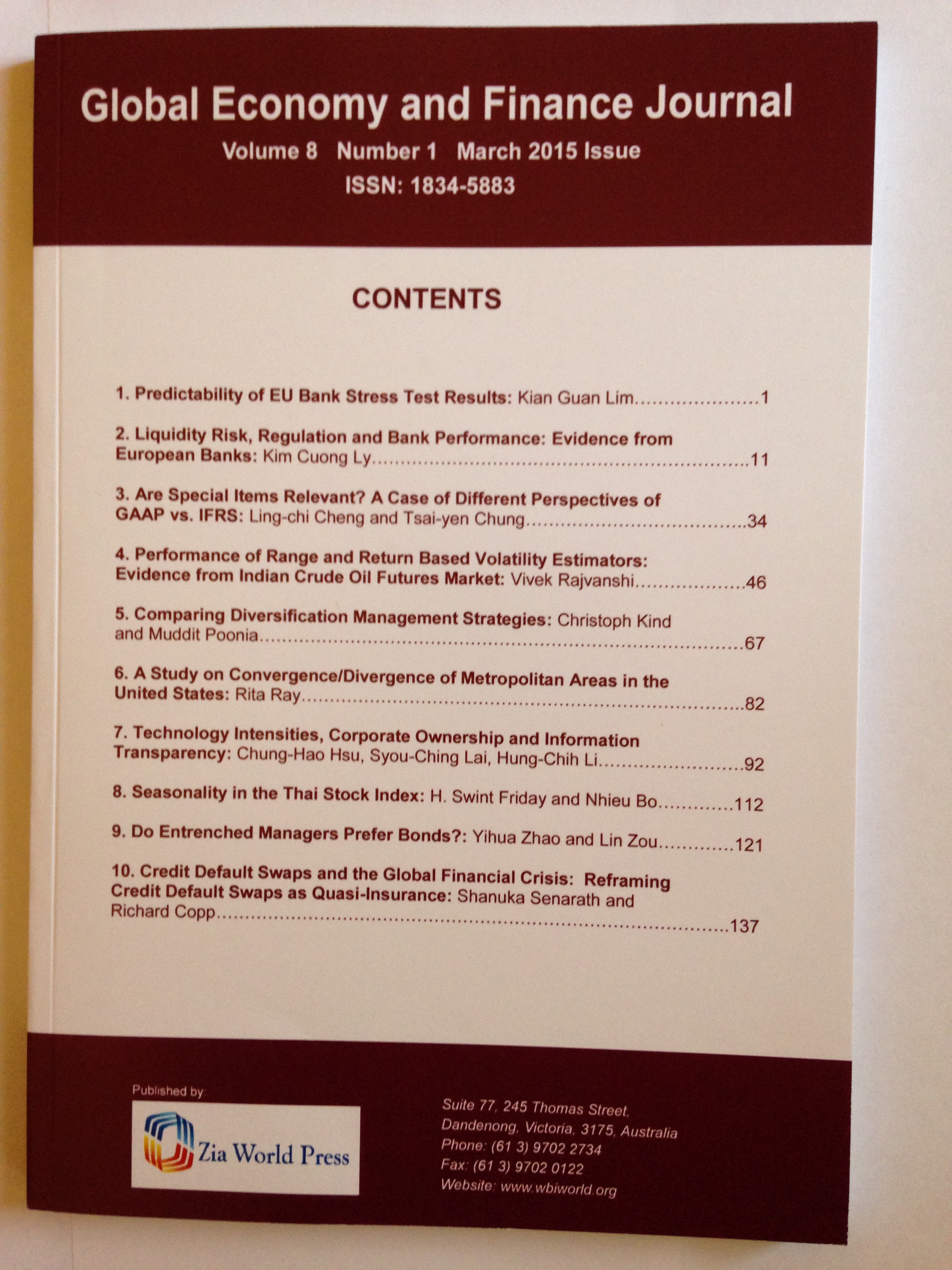Pages
1 – 11
Author: Farhana Ahmed and Md Mahbubul Hakim
This paper investigates the relationship between
remittances and economic growth in Togo. Using time
series data over a period of 42 years (1974-2015) for
Togo, we apply Johansen cointegration test methods,
followed by three-step vector equilibrium correction
mechanism (VECM) for long-run causality and Wald test
for short-run causality along with pairwise-Granger
causality test. Our result confirms a long-run bi-
directional Granger causality exists between remittances
and economic growth in Togo. However, no short-run
causal relationship exist between remittances and
economic growth. The paper also discusses policy
issues that comes up from the consequences of the
analysis. The results of this study would help the
government and policy makers to take appropriate
domestic policies in the area of migration and
remittances for Togo.
Pages
12 – 27
Author: Wenjuan Xie and Angela Deng
We study the factors driving the differences in profitability of
large commercial banks in the United States and in EU and
non-EU countries from 2004-2014. Most relevant bank-specific
and macroeconomic variables are reviewed and selected from
the literature. Pooled sample estimation and panel data tests
are conducted associating these factors with Return on Equity.
Our main findings are: macroeconomic factors have more
impact on U. S. banks’ profitability, while size and GDP growth
significantly impact foreign banks’ profitability. In comparing U.
S. and EU banks, we find significant differences in the
explanatory power of size, cash adequacy and real interest rate.
The significance and contribution of this study are from the
advancement of knowledge in the frontier of banking industry
performance research and from the innovative direct
comparison between U. S. and EU banks.
Pages
47 – 59
Author: Leena Ajit Kaushal
FDI has been one of the most preferred means of
Internationalisation for firms in the developing
economies. The significant emergence of MNEs from
the developing economies has attracted academicians’
interest across the globe. Inward FDI signals country’s
attractiveness to the foreign investors whereas outward
FDI signals country’s competence to venture beyond
domestic boundary. OFDI from India has increased
sharply since the beginning of the 2000s. An attempt
is made of identify country-specific push factors
encouraging Indian overseas investments for the
period 1991-2014 using time series data. The study
considers the eclectic paradigm of Dunning framework
and four main FDI motivations.

